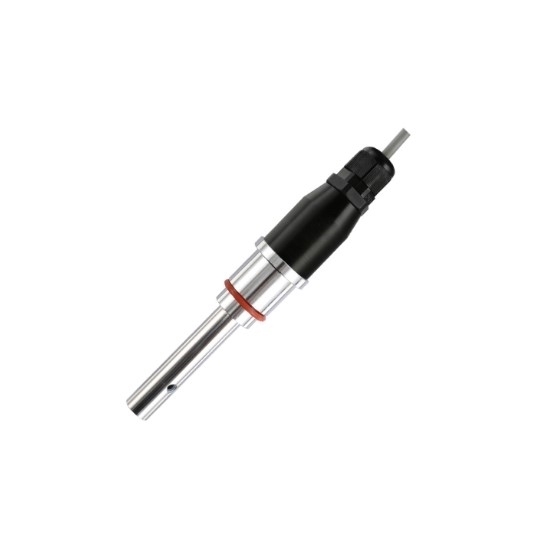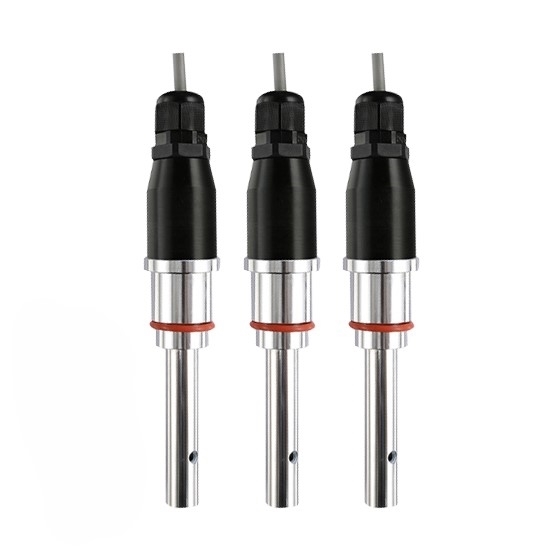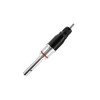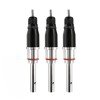



Contacting Conductivity Sensor/Probe For Water, 0~2000μs/cm
from
$314.55
Ex Tax: $314.55
- Stock: In Stock
- Model: RDDLZ-CS-1.0
- Weight: 1.00
- SKU: RDDLZ-CS-1.0
Available Options
Create unlimited custom product blocks and display them in accordions or tabs or open blocks. Each block can be assigned to all products at once or specific products according to advanced criteria.
Create unlimited custom product blocks and display them in accordions or tabs or open blocks. Each block can be assigned to all products at once or specific products according to advanced criteria.
Contacting conductivity sensor can measure the conductivity value in water in real time, and has a wide range of applications. The sensing surface material of the contacting electrical conductivity sensor/probe for water adopts a double-cylinder structure of titanium alloy, which can resist the corrosion of most liquids. Low-noise cable directly leads out, 0~2000μs/cm measurement range, real-time response and accurate data. It is an ideal device for measuring water conductivity.
Specifications
| Model | RDDLZ-CS-1.0 |
| Electrode Constant | k=1.0 |
| Measurement Range | 0μs/cm~2000μs/cm |
| Temperature Range | 0℃~60℃ |
| Accuracy | ±1%F.S. |
| Power Supply | AC 90V~260V |
| Thermistor | NTC10K |
| Withstand Voltage | <0.6MPa |
| Sensing Surface Material | Double cylinder structure titanium alloy |
| Housing Material | 316L, titanium alloy, platinum |
| Thread | NPT 1/2 or NPT 3/4 thread installation is optional |
| Connection | Low-noise cable direct lead-out |
| Installation Method | Immersion type, flow type, pipeline type, etc. |
| Application Range | Power plants, water treatment industry, etc. |
| Cable | Standard 5m |
Features
- High accuracy, good stability, accurate measurement results, fast and stable response.
- The contacting conductivity sensor/probe for water adopts a double cylinder structure and is made of titanium alloy.
- The anti-penetration conductive surface is resistant to all liquids except fluorinated acid, and is anti-pollution and anti-interference.
- The contacting conductivity transmitter has a built-in temperature probe for temperature compensation.
Installation
Application
Tips: Contacting conductivity sensor vs. inductive conductivity sensor
1. Contacting conductivity sensor
- Principle: Directly contact the liquid through two or more electrodes (usually platinum or graphite), measure the current generated in the liquid after applying voltage, and calculate the conductivity.
- Advantage: High accuracy, especially suitable for measuring low conductivity (such as pure water). Fast response, stable data, simple structure and relatively low cost.
- Disadvantage: The electrode is easily contaminated or scaled and needs to be cleaned regularly. It is not suitable for corrosive or high-concentration solutions, has a limited life, and requires good maintenance to maintain measurement accuracy for a long time.
2. Inductive conductivity sensor
- Principle: Using the principle of electromagnetic induction, there are two coils inside the sensor (one transmitting coil and one receiving coil). When the conductive liquid passes through the sensor, the electromagnetic field induces a current in the liquid, which is then detected by the receiving coil and converted into conductivity.
- Advantage: Non-contact measurement, no electrode contamination or corrosion problems, suitable for measuring high-concentration, highly polluted, highly corrosive liquids (such as acid and alkali solutions), almost maintenance-free, long service life, can be used for continuous online monitoring, strong anti-interference ability.
- Disadvantage: Not suitable for low conductivity liquids (such as ultrapure water), high cost, and usually larger in size than contact sensors.
Builder in Product TAB
NEW! Since Journal 3.2, the much improved T.A.B (Tabs Accordion Blocks) system supports the page builder inside the tab content. Unlimited Blocks, Tabs or Accordions with any HTML content or the builder interface (supporting custom rows/columns/modules) can be assigned to any individual product or to certain groups of products, like entire categories, brands, products with specific options, attributes, price range, etc.
You can indicate any criteria via the advanced product assignment mechanism and only those products matching your criteria will display the modules.
Also, any module can be selectively activated per device (desktop/tablet/phone), customer login status and other criteria. Imagine the possibilities.
